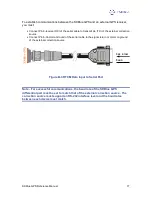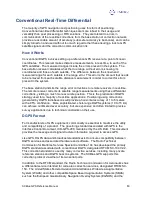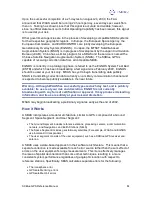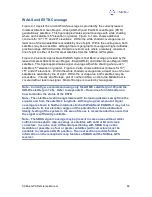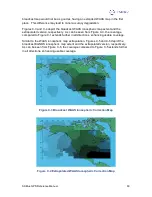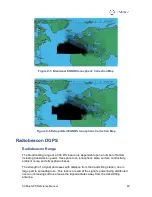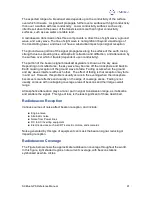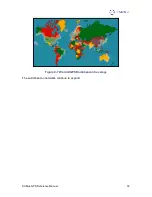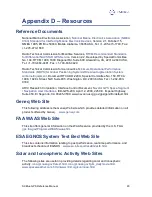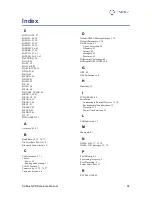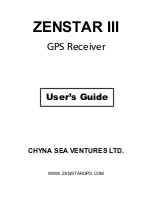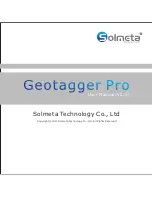
SXBlue GPS Reference Manual
91
The expected range of a broadcast also depends upon the conductivity of the surface
over which it travels. A signal will propagate further over a surface with high conductivity
than over a surface with low conductivity. Lower conductivity surfaces such as dry,
infertile soil absorb the power of the transmission more than higher conductivity
surfaces, such as sea water or arable land.
A radiobeacon transmission has three components: a direct line of sight wave, a ground
wave, and a sky wave. The line of sight wave is not significant beyond visual range of
the transmitting tower, and does not have a substantial impact upon signal reception.
The ground wave portion of the signal propagates along the surface of the earth, losing
strength due to spreading loss, atmospheric refraction and diffraction, and attenuation by
the surface over which it travels (dependent upon conductivity).
The portion of the beacon signal broadcast skywards is known as the sky wave.
Depending on its reflectance, the sky wave may bounce off the ionosphere and back to
Earth causing reception of the ground wave to fade. Fading occurs when the ground
and sky waves interfere with each other. The effect of fading is that reception may fade
in and out. However, this problem usually occurs in the evening when the ionosphere
becomes more reflective and usually on the edge of coverage areas. Fading is not
usually an issue with overlapping coverage areas of beacons and their large overall
range.
Atmospheric attenuation plays a minor part in signal transmission range, as it absorbs
and scatters the signal. This type of loss is the least significant of those described.
Radiobeacon Reception
Various sources of noise affect beacon reception, and include:
Engine noise
Alternator noise
Noise from Power lines
DC to AC inverting equipment
Electric devices such as CRT’s electric motors, and solenoids
Noise generated by this type of equipment can mask the beacon signal, reducing or
impairing reception.
Radiobeacon Coverage
The Figure below shows the approximate radiobeacon coverage throughout the world.
In this figure, light shaded regions note current coverage, with beacon stations
symbolized as white circles.

